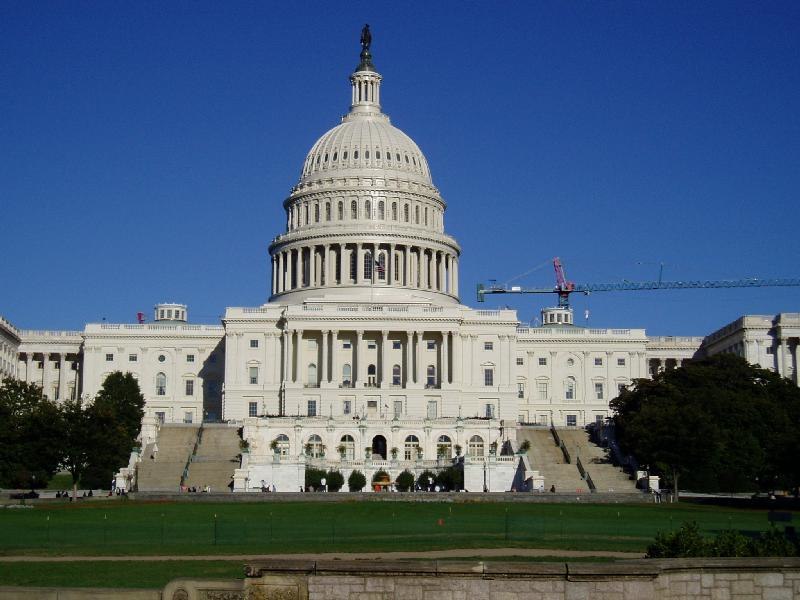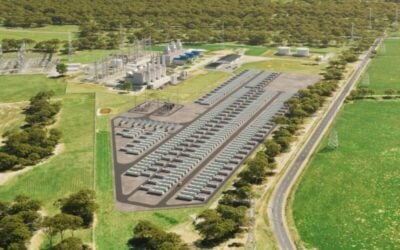
A “once-in-a-generation” commitment to invest in the US’ national infrastructure includes financial support for energy storage supply chains and renewable energy deployment, but not the investment tax credit for standalone energy storage.
The US Senate has advanced the bipartisan infrastructure bill, establishing US$550 billion in new infrastructure funding, if it can be agreed upon in a final form and then signed into law via the House of Representatives. Among swathes of investment earmarked for road building and other transport improvement programmes, the infrastructure bill allocates up to US$73 billion in renewable infrastructure investment.
Enjoy 12 months of exclusive analysis
- Regular insight and analysis of the industry’s biggest developments
- In-depth interviews with the industry’s leading figures
- Annual digital subscription to the PV Tech Power journal
- Discounts on Solar Media’s portfolio of events, in-person and virtual
It includes the creation of a new Grid Deployment Authority to build a clean, 21st century electric grid, helping more renewables connect, alongside promises to electrify thousands of school and transit buses across the country.
The funding will facilitate thousands of miles of new power transmission lines and other infrastructure to accommodate greater quantities of renewable power in the US. Although it did not include an extension of the investment tax credit for solar energy, nor introduce a standalone energy storage investment tax credit, it is thought that these could be introduced via a budget reconciliation act later this year.
By Charlie Duffield.
Read the full version of this story on PV Tech.
This story has been amended from its original form to clarify that the infrastructure bill has not yet been passed by the Senate. A final vote on the bill is expected in the coming days.
What it could mean for energy storage: ESA Interim CEO’s Twitter reaction
The irrepressible Jason Burwen, Interim CEO of the national Energy Storage Association (ESA), said via Twitter on 30 July that he had taken a closer look to see what was in the framework for energy storage.
In all, he applauded the Senate for the bill’s passing, noting that many of the things included met recommendations the ESA had put forward. He did say however, that progress on manufacturing, commercialisation and resilience would be limited by the lack of a storage ITC to drive demand.
Included was US$6 billion in support to stand up battery supply chains, an area where the US has been sorely lacking and lagging behind leaders like China and recent up-and-comers like the European Union. Half of that US$6 billion goes to minerals and processing sectors and the other half to manufacturing and recycling, Burwen said. A 48C clean energy manufacturing tax credit introduced also applies to energy storage.
While the ESA head said this is a strong start to a “supply-push” strategy, the US “will only get robust manufacturing if we have high demand for energy storage,” which he said was one reason why “clean energy tax credits need to get done this year”.
Elsewhere, the bill includes more than US$500 million for energy storage demonstrations, which could accelerate the commercialisation of next-gen technologies, especially longer duration storage and would spur “unique configurations and business models”. The creation of an Office of Clean Energy Demonstrations would also be authorised at the Department of Energy.
There are also a number of grant programmes that could include energy storage, such as US$11 billion pledged towards power system resilience, US$3 billion for grid flexibility and money for clean energy developments on brownfield sites and at school buildings.
Burwen also said it was interesting that initiatives to study codes and standards for energy storage, with an emphasis on vehicle-to-grid (V2G) applications was included. V2G is an area of “significant regulatory uncertainty that needs resolution, given all the V2G promises of EV companies,” he wrote.
There was also US$9.5 billion R&D and demonstration investment for hydrogen, including at least US$1 billion for green hydrogen and some regulatory updates, incentives and demonstration programmes for pumped hydro energy storage.
“Way to go Senate!” Burwen said. He finished his Twitter thread with a recognition that the storage ITC also has bipartisan support and is included in proposed legislation like the Senate and House clean energy tax packages S.2118 and H.R.848 as well as in the American Jobs Plan.
“So let’s keep infrastructure week going–and make infrastructure strong with a #storageITC”
Jason Burwen’s 30 July 2021 Twitter thread was plundered for the above take by Andy Colthorpe.






